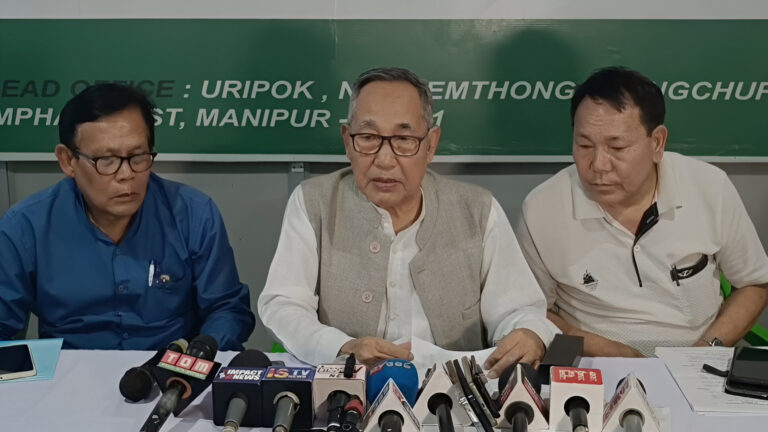Life in Transition: Pre-Fabricated Shelters Bring Respite to Manipur’s Displaced
Summary of the News Article
The violent ethnic clashes in Manipur in May 2023 led to the displacement of over 60,000 individuals. To address the dire situation, the Manipur government initiated the construction of 3,000 pre-fabricated shelters across 14 districts, with 2,660 completed and 2,520 currently occupied by January 2025. These shelters aim to offer displaced families better living conditions, privacy, and access to agricultural land for sustenance. However, challenges persist, including irregular government aid, lack of adequate facilities, and educational barriers for children.
In-Depth Analysis: Life in Pre-Fabricated Shelters
Introduction: A Glimpse of Resilience Amid Crisis
When adversity knocks, resilience is the answer. This has been the spirit of thousands displaced in Manipur, who faced the trauma of losing homes and livelihoods due to ethnic violence. The introduction of pre-fabricated shelters by the government has brought a glimmer of hope, serving as a temporary refuge for these displaced individuals.
Imagine being stripped of the comfort of your home and forced into a crowded relief camp. Wouldn’t it feel like your personal space and dignity had been taken away? That’s why these shelters, while not a perfect solution, are a significant step forward.
The Origin of Pre-Fabricated Shelters
Why Were They Built?
In May 2023, ethnic clashes erupted in Manipur, displacing tens of thousands. The government recognized the urgent need for housing that could be quickly assembled and provide basic dignity to the affected families. Thus, the initiative to construct 3,000 pre-fabricated shelters was launched across 14 districts.
Structural Design: Built for Purpose
The shelters are designed for efficiency and simplicity. Each unit consists of two rooms and a toilet, offering basic amenities for families. Shared kitchens are available for groups, fostering a sense of community. The use of durable materials like pre-painted CI sheets and puff panels ensures these structures can withstand the region’s weather conditions.
Life Inside the Shelters
A Step Up from Relief Camps
For many, moving into these shelters has been like trading a chaotic storm for a quiet harbor. Relief camps were overcrowded, with limited privacy and basic resources stretched thin. The pre-fabricated shelters provide much-needed private space and stability. Families now have a place they can call their own, even if temporary.
Access to Agricultural Land
A unique aspect of these shelters is the provision of nearby arable land. Families can grow their own vegetables, fostering self-reliance and easing their financial burdens. This initiative not only puts food on the table but also gives displaced individuals a sense of purpose.
Community Spirit in Shelters
Living in close quarters often leads to the formation of strong community bonds. Many shelter residents have formed committees to voice their concerns collectively, ensuring that government aid is distributed fairly and timely.
Challenges Faced by Residents
Irregular Government Support
While the shelters are a big step forward, they are not without their challenges. Residents often face delays in receiving promised government aid, such as daily monetary provisions and food rations. These delays put immense pressure on families who already struggle to make ends meet.
Educational Hurdles
Children are among the most vulnerable in such crises. With schools disrupted and public education under scrutiny, many families opt for private institutions. However, this adds a financial burden on families already grappling with limited resources.
Administrative Barriers
Obtaining necessary documents like birth certificates has proven to be a daunting task for many residents. These documents are crucial for accessing government services, enrolling in schools, and even receiving aid. Without them, displaced individuals face additional layers of marginalization.
Voices from the Shelters: Stories of Resilience
Stories from the ground reveal the strength and determination of the displaced. Take the case of Athokpam Somorendro, who has been cultivating vegetables near his shelter to sustain his family. While he appreciates the government’s efforts, he emphasizes the need for consistent aid and the ultimate dream of returning home.
Another resident, a young mother, shared how she has started a small craft business within the shelter. Despite the limited market access, she remains optimistic about rebuilding her family’s future.
Looking Ahead: The Path to Rehabilitation
Sustainability and Long-Term Planning
The question looms large: Are these shelters a temporary fix or a stepping stone to permanent solutions? The government needs to address this to ensure that displaced individuals are not left in limbo.
Reintegration into Society
Efforts must focus on integrating displaced individuals back into mainstream society. This includes providing stable housing, ensuring educational opportunities for children, and creating employment avenues for adults.
Government Transparency and Accountability
The success of such initiatives relies heavily on transparent governance. Timely delivery of aid, fair distribution of resources, and addressing bureaucratic hurdles are essential for building trust among the displaced.
Conclusion: Shelter with Hope
The pre-fabricated shelters in Manipur represent a ray of hope for thousands of displaced individuals. While they address immediate needs, long-term solutions are crucial for rebuilding lives and communities. These shelters are not just about physical structures; they symbolize resilience, community, and the possibility of a brighter future.
FAQs
- What are pre-fabricated shelters?
Pre-fabricated shelters are temporary housing units made from durable materials that can be quickly assembled to provide immediate relief for displaced individuals. - How many shelters have been completed in Manipur?
As of January 2025, 2,660 shelters have been completed, with 2,520 currently occupied. - What challenges do residents face in these shelters?
Residents face issues like delayed government aid, educational barriers for children, and administrative challenges in obtaining essential documents. - How do these shelters improve living conditions?
They provide families with private space, access to arable land for farming, and a sense of stability compared to overcrowded relief camps. - What is the long-term plan for displaced individuals?
The government aims to reintegrate them into society, either by facilitating their return to original homes or providing permanent housing solutions.

